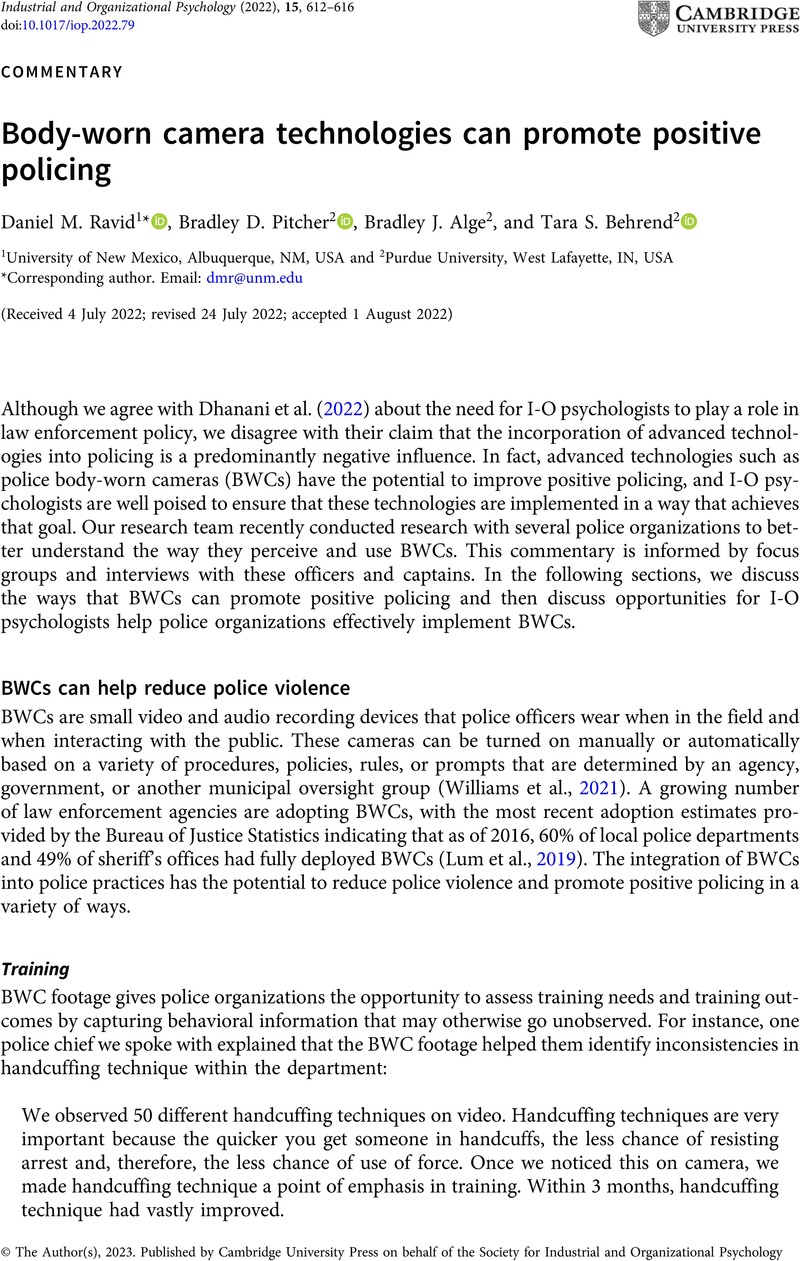Article contents
Body-worn camera technologies can promote positive policing
Published online by Cambridge University Press: 27 January 2023
Abstract

- Type
- Commentaries
- Information
- Copyright
- © The Author(s), 2023. Published by Cambridge University Press on behalf of the Society for Industrial and Organizational Psychology
References
- 1
- Cited by


